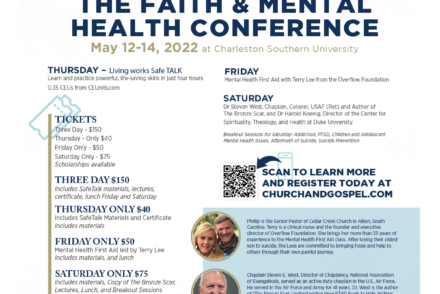Making sense of the latest Pew Research Center data about religion in America, released November 3, 2015, will be challenge enough for most of us church people. Implementing effective mission strategies to reverse the trends identified in the study is another matter altogether.
The media people at Pew summarized their latest findings in the headline scrolled across the study façade—U.S. Public Becoming Less Religious. The study was conducted in 2014 and was initially released May 12, 2015. While their findings indicated a continued decline in the number of Christians in the U.S. population, the personal practices of convictional Christians showed strength and growth in that segment of the population. If you’re interested in the details, the complete study can be viewed at http://www.pewforum.org/2015/11/03/u-s-public-becoming-less-religious/
One striking statistic is the increase in the number of “nones”, that is, people with no religious preferences, from 16.1% of the population in 2007 to 22.8% in 2014. This particular number should be a continued wake-up call to local churches because Jesus commissioned his church to declare the gospel to them. With a growing separation between those identified as convictional Christians and those with no religious preferences this mission is even more challenging. Most pastors and church leaders I know invest hours of study and abundant resources exploring effective ways to minister beyond the traditional boundaries that mark church life. This may be the most perplexing dilemma of these times.
The learning curve of church leaders is always sharply upward. One lesson that hammered me in the past ten to twelve years has been the simple fact that mission outside the walls doesn’t necessarily mean beyond the physical limits of the church property. In retrospect, our most fruitful ministries with nones and nominals over the years has occurred on the church campus, but beyond the traditional church hours and formats.
In the glance back, ten strategic local community initiatives placed us in close proximity to the none and nominal populations around us—
1. Establishment of a community counseling center with LPC counselors.
2. A strong and vigorously promoted Celebrate Recovery ministry.
3. Community seminars and teaching sessions on important current issues.
4. Community children’s events and outdoor activities.
5. Organized gospel centered sports.
6. Cross cultural and community relief ministries.
7. School partnerships and strategic student improvement activities.
8. Seasonal celebrations and presentations.
9. A healthy motorcycle training and discipleship ministry.
10. A strong and evangelistic women’s ministry.
One of disciplines our staff practiced was regular and consistent review of church web sites, especially those who were known to be sensitive to the unchurched people in their sphere of influence. Every day we learned ways for our convictional Christians to engage the nones and nominals who evidently represented 22.8% of the community around us. At the same time I was constantly impressed with the creative and innovative freshness of these congregations. In most instances they were eager to share their successes and challenges in pursuing a particular contact point with their neighbors.
Engagement is one of the cultural buzzwords. If the demographics about the nones and nominal are close to accurate, engaging them may be more probable during holiday seasons than at any other time. So, with Thanksgiving, Christmas, and New Year’s celebration happening soon, it may be a choice opportunity to extend a hand of invitation to those in your neighborhood.
Jesus told the parable of the Great Banquet. The final lesson of this teaching involved another commission, one that is often overlooked. The master of the house said, “Go out to the highways an hedges and compel people to come in, that my house may be filled” (Luke 14:23). It was a purposeful, intentional directive to his followers.
Paul’s questions to the Roman believers is another angle on our engagement of the unbelieving world around us. He asked, “How then will they call on him in whom they have not believed? And how are they to believe in him of whom they have never heard? And how are they to hear without someone preaching? And how are they to preach unless they are sent?” (Romans 10:14-15).
Those are the questions of engagement. How then, indeed?





No Comments